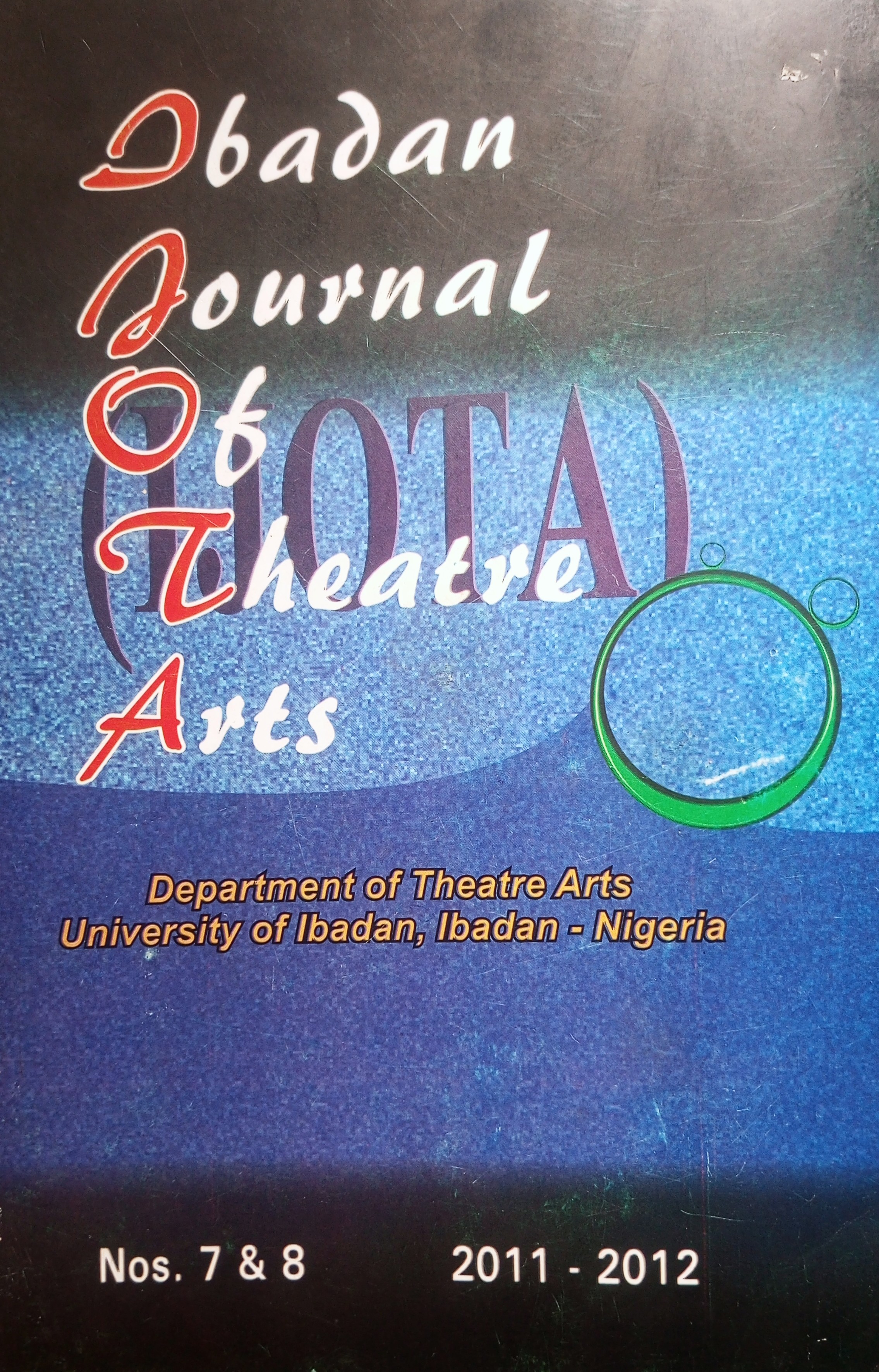COST-EFFECTIVE MECHANICS IN FEMI OSOFISAN'S ADAPTATIONS OF SHAKESPEARE
Keywords:
Cost-effective Mechanics, Adaptation, William Shakespeare, Femi OsofisanAbstract
That theatre practice in Nigeria has been at a low ebb owing to lack of financial support since the 1980s is no longer news. In recent times. innovative theatre practitioners have exerted effort in taking theatre beyond the confines of the ivory tower in order to restore it to the daily life of ordinary Nigerians. Many of available play scripts hardly make it to these emergent theatres because they are very expensive. As such, the directors of these new theatres are forced to generate their own plays, a situation that still persists, suggesting that most established Nigerian playwrights have not seen the need to create plays that can compete with, say, Nollywood and stand-up comedy, in cost-effectiveness and less cumbrous stageability. Through the analysis of form and deployment of cost-saving theatrical devices in Femi Osofisan's two recent adaptations of William Shakespeare's plays - Wesoo, Hamlet! Or The Resurrection of Hamlet and Love's Unlike Lading: A Comedy From Shakespeare this essay highlights the manner in which playwrights can create scripts that are appropriate for a bankrupt theatre tradition like Nigeria's. The enquiry is qualitative in approach, specifically deploying textual analysis with a view to identifying the deliberate use of certain theatrical devices to make plays less cumbrous for stage presentation. By using Osofisan's adaptations of Shakespeare's Hamlet and The Merchant of Venice, this essay posits that it is possible to reduce stage plays that are potentially expensive in their production into ones that require minimal cost. It then recommends that the engendering of less expensive play texts will greatly enhance the resuscitation of theatre practice in Nigeria.

